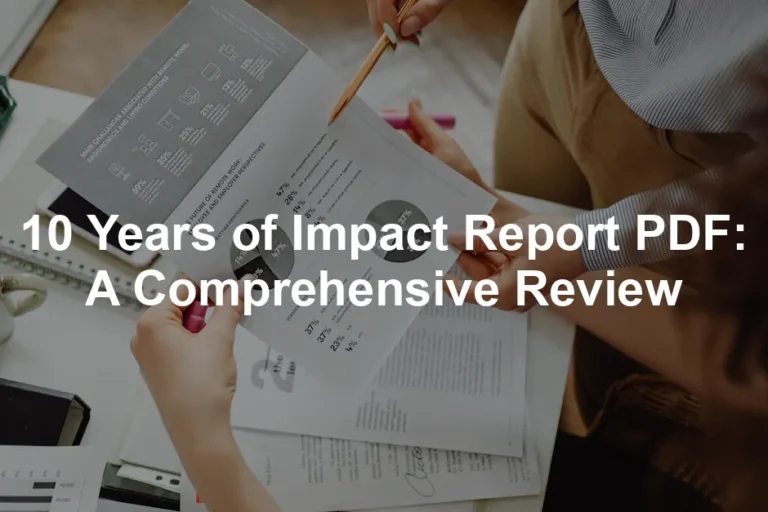Introduction
Springfield, Massachusetts, a city known for its rich history and vibrant culture, faces a significant challenge: crime. Understanding crime statistics in Springfield is crucial for residents, potential movers, and policymakers alike. These numbers provide insight into the safety and security of the community, influencing decisions about where to live, work, and allocate resources. Crime statistics serve as a lens through which we can examine the effectiveness of law enforcement and community initiatives. They help individuals gauge safety levels and make informed choices. For example, if you’re considering relocating to Springfield, knowing the crime landscape can guide your decision. Similarly, policymakers can use this data to address issues, improve community safety, and implement effective crime prevention strategies. This article aims to provide a thorough analysis of crime statistics in Springfield, MA. We’ll explore trends, safety perceptions, and available resources. By the end, you’ll have a clearer understanding of the crime situation in this city, allowing you to engage more effectively with local law enforcement and community programs. So, let’s get started on this enlightening journey through Springfield’s crime statistics!Overview of Crime in Springfield, MA
What Are Crime Statistics?
Crime statistics quantify the frequency and types of crimes reported in a specific area. They are vital for understanding safety and security trends. By analyzing these statistics, we can identify patterns and areas needing attention. Two primary categories define crime statistics: violent crimes and property crimes. Violent crimes include serious offenses like murder, rape, robbery, and assault. These crimes directly threaten personal safety. On the other hand, property crimes encompass burglary, theft, and vandalism, which primarily affect personal belongings and property. Understanding these categories helps residents and officials prioritize safety measures. It highlights areas needing community support and law enforcement focus. By examining the statistics, we can better understand the challenges Springfield faces and the steps we can take to improve safety in the community. In the following sections, we will present the current crime rates, analyze trends over time, and delve into the details of specific crime categories, all while keeping our friendly and curious tone alive. Stay tuned for a comprehensive breakdown of Springfield’s crime scene!Current Crime Rates in Springfield
Springfield, MA, has a reputation for higher-than-average crime rates. Recent statistics reveal that the overall crime rate in Springfield is 39.1% higher than the national average. According to AreaVibes, the city reported 1,337 violent crimes, translating to 862 incidents per 100,000 residents. This figure is a staggering 133.2% above the national average. When it comes to property crimes, Springfield recorded 3,674 incidents, or 2,370 per 100,000 people, which is 21.3% higher than the national average. Let’s break down some specific numbers:| Statistic | Springfield (per 100k people) | Massachusetts (per 100k people) | National (per 100k people) |
|---|---|---|---|
| Total Crime | 5,011 | 3,232 | 2,324 |
| Murder | 14 | 9.0 | 6.3 |
| Rape | 82 | 52.9 | 40.0 |
| Robbery | 265 | 170.9 | 66.1 |
| Assault | 976 | 629.5 | 268.2 |
| Burglary | 579 | 373.4 | 269.8 |
| Theft | 2,590 | 1,670.5 | 1,401.9 |
| Vehicle Theft | 505 | 325.7 | 282.7 |

For a deeper understanding of crime statistics in Springfield, you can refer to the detailed analysis of fremont crime statistics.
Crime Rate Trends Over Time
Now, let’s take a look at crime trends from 2009 to 2023. Over the years, Springfield has experienced fluctuations in various crime categories. In 2022, the city saw a slight decrease in crime rates overall, with a 0.7% reduction compared to the previous year. Here’s a quick snapshot of the historical data:| Year | Violent Crimes | Property Crimes |
|---|---|---|
| 2009 | 1,256 | 4,896 |
| 2010 | 1,354 | 4,890 |
| 2011 | 1,027 | 4,783 |
| 2012 | 1,039 | 4,545 |
| 2013 | 1,089 | 4,631 |
| 2014 | 1,081 | 3,839 |
| 2015 | 1,073 | 3,353 |
| 2016 | 1,030 | 3,292 |
| 2017 | 874 | 2,972 |
| 2018 | 988 | 2,635 |
| 2019 | 905 | 2,595 |
| 2020 | 1,044 | 2,621 |
| 2021 | 1,026 | 2,517 |
| 2022 | 976 | 2,590 |

Detailed Crime Breakdown
Violent Crimes
Let’s dive deeper into violent crime statistics, which include categories like murder, rape, robbery, and assault. – Murder: Springfield’s murder rate stands at 14 per 100,000 residents, higher than the Massachusetts average of 9.0 and the national average of 6.3. If you’re intrigued by the dark tales of crime, consider reading “Crime and Punishment” for a psychological dive into the mind of a murderer. – Rape: The city recorded 82 rapes per 100,000 residents, surpassing both the Massachusetts average of 52.9 and the national average of 40.0. It’s a grim statistic that underscores the need for vigilance and community action. – Robbery: With 265 robberies per 100,000, Springfield significantly exceeds the Massachusetts average of 170.9 and the national average of 66.1. For those looking to understand the criminal psyche further, John E. Douglas’s “Mindhunter” offers a fascinating glimpse into the minds of serial criminals. – Assault: The assault rate in Springfield is 976 per 100,000 residents, well above the Massachusetts average of 629.5 and the national average of 268.2. Understanding these rates can empower residents to take action and advocate for community safety. In summary, Springfield’s violent crime rates are notably higher than both state and national averages. Understanding these figures is crucial for residents and potential movers as they consider their safety and the overall quality of life in Springfield.Recent Trends in Violent Crime
Violent crime in Springfield has seen some fluctuations recently. In 2023, the city recorded a significant spike in homicides, jumping from 14 in 2022 to a staggering 31. This increase places Springfield with the highest homicide rate among New England’s major cities. However, there’s a silver lining; the last quarter of 2023 experienced the fewest homicides in six years, suggesting some improvement. Factors contributing to these trends include seasonal violence, particularly during the summer months, and ongoing issues with illegal firearms. Police efforts to seize illegal weapons have ramped up, with 346 firearms confiscated in 2023 alone. This proactive approach could help mitigate violent crime moving forward.Property Crimes
When discussing property crimes in Springfield, we see a mix of categories: burglary, theft, and vehicle theft. Let’s break it down: – Burglary: Springfield recorded 579 burglaries per 100,000 residents, significantly higher than the Massachusetts average of 373.4. To delve deeper into the world of crime and its implications, check out “The Anatomy of Violence”, which explores the biological factors behind criminal behavior. – Theft: The city experienced a staggering 2,590 thefts per 100,000 residents, outpacing the state average of 1,670.5. This highlights the importance of community vigilance and crime prevention strategies. – Vehicle Theft: With 505 vehicle thefts per 100,000 residents, Springfield exceeds the Massachusetts average of 325.7. To gain further insight into the psychology of crime, you might find “The Psychology of Criminal Conduct” enlightening. Overall, Springfield’s property crime rates are concerning, sitting at 21.3% higher than the national average. This trend underscores the importance of community awareness and crime prevention measures.Recent Trends in Property Crime
Over the past few years, property crime rates have shown a slight decline. In 2022, property crimes decreased by 2% compared to 2021. This reflects a broader effort by local law enforcement and community programs to address safety concerns. However, challenges remain, particularly in areas with high foot traffic and limited surveillance. Community engagement, such as neighborhood watch programs, can play a pivotal role in further reducing these numbers. Residents are encouraged to stay vigilant and report suspicious activities to help combat property crimes effectively.
Neighborhood Crime Rates
Springfield has a diverse range of neighborhoods, each with unique crime rates. Let’s highlight some of these areas: – Safer Areas: Neighborhoods like East Forest Park, Sixteen Acres, and East Springfield boast lower crime rates. Residents here often report feeling safer and more secure walking alone, especially at night. – Higher Crime Areas: On the flip side, neighborhoods such as Metro Center, Bay, and Old Hill have higher crime rates. These areas often report more frequent incidents of both violent and property crimes, making safety a more pressing concern. Understanding these neighborhood dynamics is crucial for residents and potential movers. By knowing where safety levels are higher, individuals can make informed decisions about where to live in Springfield. Engaging with local law enforcement and community programs can also bolster safety in these areas.Community Sentiment and Safety Perception
Local Sentiment on Crime
So, what do Springfield residents really think about crime? According to recent surveys by AreaVibes and Niche, the answers are a mix of relief and concern. About 16% of locals feel that crime is minimal. They stroll confidently, even at night. But hold your horses! A whopping 84% admit to feeling uneasy, often choosing to avoid walking alone after dark. It’s like living in a city with a split personality—some folks are unfazed, while others are perpetually on guard. In the same vein, Niche polls highlight that 36% of respondents feel “pretty safe,” while another 36% say they’re “somewhat safe.” Only 11% claim they feel “very safe.” It’s a bit of a rollercoaster when you think about it. The sentiment reflects a community striving for safety, but there’s clearly a cloud of anxiety hanging overhead.
Is Springfield a Safe Place to Live?
Now, let’s tackle the million-dollar question: Is Springfield a safe place to live? The answer isn’t exactly a resounding yes. With crime rates soaring 39% above the national average, it’s clear why many residents are feeling jittery. In fact, the average daily incidents in Springfield amount to about 13.73, including 3.66 violent crimes and 10.07 property crimes. But it’s not all doom and gloom. Several factors contribute to the general safety perception. The Springfield Police Department has a visible presence, although they’re slightly outnumbered, with 2.67 officers for every 1,000 residents. This is lower than the national average of 3.25, which raises eyebrows. Community programs also help to cushion the blow. Initiatives aimed at reducing crime and enhancing safety are constantly popping up. Local neighborhood watch groups are becoming more common, and residents are encouraged to engage with law enforcement. The police have ramped up efforts to seize illegal firearms, which is a crucial step in addressing violent crime. In 2023 alone, they confiscated 346 illegal weapons. In summary, while Springfield does face significant challenges regarding safety, the community is actively working to improve conditions. It’s like a team effort—residents and law enforcement are in it together, trying to tackle the crime that sometimes feels like an unwanted visitor.
Factors Influencing Crime Rates in Springfield
Economic Factors
Let’s shift gears and examine the economic landscape, which plays a vital role in crime rates. Springfield’s economic situation is mixed, and this directly impacts safety. For one, the cost of living in Springfield is 1.45% higher than the national average. This financial pressure can lead to stress and, unfortunately, crime. Unemployment rates also contribute to the crime puzzle. When jobs are scarce, desperation can lead individuals down a dark path. More people may resort to illegal activities when they can’t meet their basic needs. You can almost hear the sighs of frustration echoing through the city. Housing affordability is another piece of the puzzle. The median home price in Springfield is around $162,900, which is lower than the national average of $184,700. While it might sound appealing, the economic strain can push some individuals into crime. The cycle continues as people struggle to make ends meet, leading to higher crime rates.
Law Enforcement Presence
Springfield’s crime prevention hinges on its law enforcement presence. With approximately 2.67 police officers for every 1,000 residents, the ratio falls below the national average of 3.25. This can impact response times and community safety perceptions. A lower ratio means officers may be stretched thin, making it challenging to maintain order and effectively deter crime. More officers on the streets could lead to quicker responses and a stronger community presence. The Springfield Police Department is working hard to bridge this gap. They focus on community engagement and crime prevention initiatives. These efforts aim to create a more visible and approachable police force, helping to foster trust between residents and law enforcement.
Housing and Community Programs
Affordable housing and community engagement play crucial roles in crime reduction. Springfield faces challenges with housing affordability, which can lead to instability. When families struggle to find safe and affordable homes, crime rates may rise. Stable housing provides security, reducing the likelihood of criminal behavior. Community programs are vital in addressing these issues. Initiatives that promote community involvement help build connections among residents. When neighbors know each other, they are more likely to look out for one another. Programs that encourage youth engagement can also deter crime by providing positive alternatives to at-risk behaviors. Ultimately, fostering a sense of community can lead to safer neighborhoods.
Resources for Residents
Crime Mapping and Alerts
Springfield residents have powerful tools at their fingertips to stay informed about local crime. The CityProtect crime map is a valuable resource. By visiting CityProtect.com/agency/SpringfieldMa, residents can view crime incidents in their area. Simply enter your address to see the types of incidents reported nearby. The map allows users to filter incidents by type, date range, and even specific days of the week. This feature helps residents stay aware of trends in their neighborhoods. Additionally, residents can sign up for crime alerts. This service delivers email notifications about recent incidents in their area. Staying informed allows residents to take proactive steps to enhance their safety. Reporting incidents anonymously is also an option, encouraging community involvement without fear of repercussions.
Community Support Programs
Several local organizations and initiatives focus on crime prevention and community safety in Springfield. For example, neighborhood watch programs empower residents to take an active role in keeping their communities safe. These groups foster communication between neighbors and law enforcement, ensuring everyone is on the same page. Organizations like the Springfield Partners for Community Action provide resources and support to those in need. They focus on addressing the underlying issues that contribute to crime, such as poverty and lack of access to education. By empowering residents through various programs, these initiatives help to create a safer environment for all. If you’re interested in a gripping true crime narrative, consider reading “The Good Nurse” for a chilling account of crime in the medical field.
Conclusion
Understanding crime statistics in Springfield is essential for residents and potential movers. The data reveals the challenges the city faces, particularly with higher-than-average crime rates. However, it also highlights the efforts of local law enforcement and community programs aimed at improving safety. Engaging with these resources can significantly impact the community. Staying informed through crime alerts and participating in local initiatives can foster a sense of security. Residents are encouraged to build relationships with their neighbors and law enforcement to create a safer Springfield. By understanding crime statistics and actively participating in community programs, individuals can contribute to a more secure environment. Together, residents can work towards reducing crime and improving the quality of life in Springfield. If you’re interested in the historical context of crime, read “The Complete History of American Crime” for a deep dive into the subject.FAQs
What are the most common types of crime in Springfield?
Based on recent statistics, the most common types of crime in Springfield include property crimes such as theft and burglary. Violent crimes, including assault and robbery, also contribute significantly to the overall crime rate. Specifically, here’s a quick overview: – **Theft**: 2,590 incidents per 100,000 residents. – **Burglary**: 579 incidents per 100,000 residents. – **Assault**: 976 incidents per 100,000 residents. These statistics reflect the challenges residents face and the importance of community engagement in addressing these issues.
All images from Pexels




